QuestionActually I don't even have my first tank but I am about to buy a 96 Gallons freshwater tank.
Tank size 172x60x35 cm .
I am wondering what would be a nice, colorful & not expensive fish population.
I am looking for species suggestion & number of fishs per species (I want a variety of species high in colors that would swim @ all levels of the tank)
any suggestion is highly appreciated.
Thanks,
lAdK
AnswerHi Tony;
I apologize for not answering your question sooner. I was on vacation all weekend and apparently I got questions anyway in spite of registering my vacation time with AlExperts. Sorry about that.
An assortment of tetras and rainbowfish would be nice in a tank that size. Get at least 5 of each type for them to school together. Red Minor, Cardinal, Bleeding Heart, Flame Tetras are among the most colorful. Rainbowfish are quite colorful too. Check out what's available at your local fish store. Prices really depend on your area so I really can't help you with that part. Just shop around and do research on the types of fish you like.
Male Dwarf gouramis are colorful. They stay on the small side and don't get aggressive like the larger types of gouramis.
Swordtails and Platies are available in many colors and are compatible with the above fish listed. They should be in groups of 3 or more, with one male per at least two females.
There are many really nice looking cory cats available for the bottom of your tank too. Even though there aren't any colorful ones (unless dyed) they are still very cute and can be active little fellas when in groups.
Please avoid fish that are artificially colored. This is a very cruel practice and frowned on by true fish loving experts and hobbyists. Here is a web site that tells you what to look for;
http://www.practicalfishkeeping.co.uk/pfk/pages/show_article.php?article_id=72
Remember to start your new tank very slowly and add only a few fish until the first 6 to 8 weeks is over. Here is a copy of my article on new tanks to help you through it;
**********
New Tank Syndrome or Break-in Period
So you have a new tank and you filled it up, put the filter together, mounted the heater into place and turned on the lights. You have all the plants and decorations where you want them....
You are ready for fish.
But, your filter is not ready for a full tank of fish yet.
The filter is running and moving the water and cleaning out crud, right? Of course!
But a very important part of your filter is the part you can't see. An aquarium filter removes the larger visible stuff, but it also must remove the dissolved fish waste that turns into ammonia in the water. To do this, special bacteria must grow in the filter system and on the particles of gravel in the bottom of your tank. This process occurs even on a limited scale in little fish bowls that have no filter in them.
This is "New-Tank Syndrome" or the "Break-in Period". The entire process takes 6 to 8 weeks to complete because these "nitrifying" bacteria grow quite slowly.
Start off with only one or two hardy fish (no more than 2 total inches of fish) for every ten gallons of water and don't add more until the 6 to 8 weeks has gone by. Hard to be patient, but it is worth it to keep your fish alive and healthy. As a matter of fact, the bacteria cannot develop without fish in the tank. You can let that tank sit forever without fish in it, but as soon as the first fish goes in the process begins. Avoid changing the filter pads during break-in. This removes the bacterial colonies that are essential to a balanced aquarium. You can rinse the filter pad out in a container of aquarium water. This will preserve most of the bacteria colonies while still allowing your filter to flow freely. Even using bacteria additives and water conditioners when you first set up the tank will not make a tank begin the cycle by itself. If there are no fish to provide food (fish waste) for the bacteria, the beneficial bacteria cultures will die and you will have to start the colonies all over again once fish are added to the tank. Once the tank has completed the initial cycle, you can change the filter pads every 4 weeks or so. But for now, just rinse them.
Feed your new fish VERY lightly. Any excess food will cause additional waste your system cannot afford to have right now. If you see food floating around or lying on the plants and gravel after five minutes, too much food is going into the tank. Cut back a little each time you feed until it is ALL gone 5 minutes after you feed them. Feed them once a day.
During this "break-in period" your tank will become cloudy and milky looking. You may have to tolerate this for the entire break-in period but it is only temporary. Changing 25% of the water three times a week until the break-in period is over helps a great deal. Changing water reduces the ammonia and nitrites that rise while the bacteria continues to multiply. If ammonia and/or nitrites become too high, your fish will become stressed and possibly die. Use a good water conditioner when you replace the water and make sure it is the right temperature to avoid shocking your fish.
When the break-in is over after 6 to 8 weeks and there are no nitrites or ammonia present in the water you can slowly add more fish. Add one or two every week until you reach the desired population. This allows the bacteria to adjust to the new population every time before adding more. Monitor the nitrites and ammonia to be sure they don't come up. If they do, make a 25% water change and check them again. Don't add the next fish until the levels are down again.
The safe maximum population for any size tank is one inch of adult fish for every gallon of water in the tank. Do some research to be sure of the fish you are interested in. Even though they are small when you buy them, you have to base your population calculations on full-sized adult fish. Many hobbyists have up to two inches per gallon but this can be risky. If a water quality issue arises or a disease occurs it will spread fast and furious in an over-populated tank. In any case, 25% water changes every week to two weeks are absolutely essential for the health of your fish.
Following these guidelines will help you get your new tank on the right track.
**********
Followups welcome
At Your Service;
Chris Robbins
Come on over and join us on the freshwater fish forum at About.com to get even more information too;
http://freshaquarium.about.com/od/questionsanswers/a/naavigateforum.htm
My member name is ChrisR62. See You There!

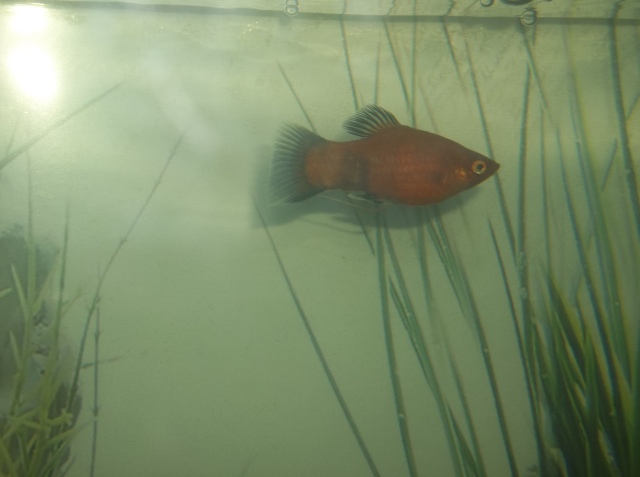 RED WAG PLATY SICK?
QuestionQUESTION: I HAVE A 60 GAL TANK WITH BRACKISH WA
RED WAG PLATY SICK?
QuestionQUESTION: I HAVE A 60 GAL TANK WITH BRACKISH WA
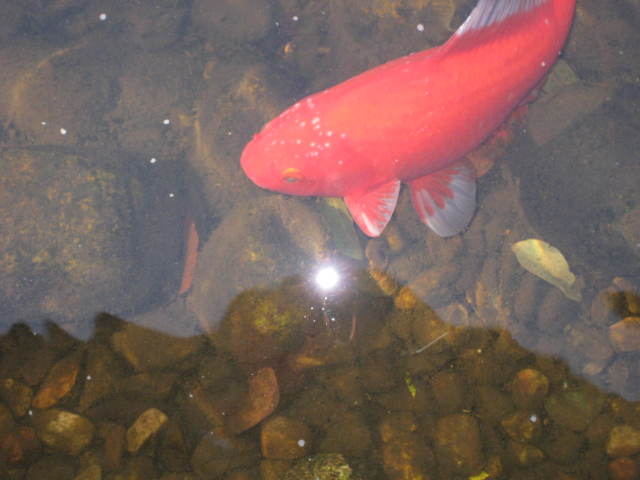 comet white spots
QuestionComet
QUESTION: I have a comet (for abou
comet white spots
QuestionComet
QUESTION: I have a comet (for abou
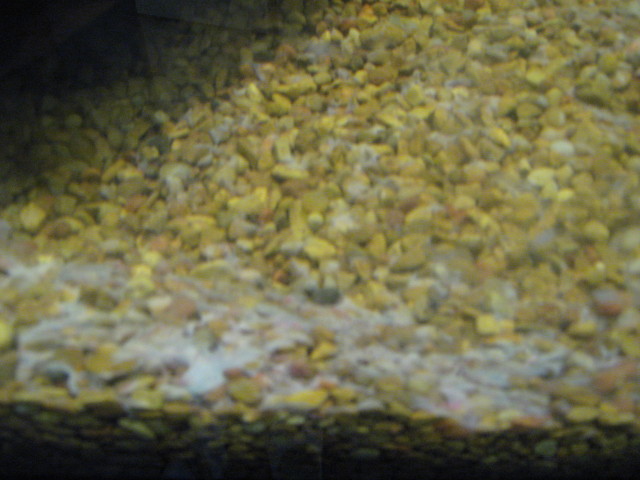 white cobwebs in my tank
Question
cobwebs
Hi!
Im a novice fish owner. weve had o
white cobwebs in my tank
Question
cobwebs
Hi!
Im a novice fish owner. weve had o
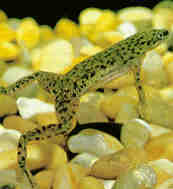 native freshwater fish
QuestionI am considering putting up a freshwater tank f
native freshwater fish
QuestionI am considering putting up a freshwater tank f
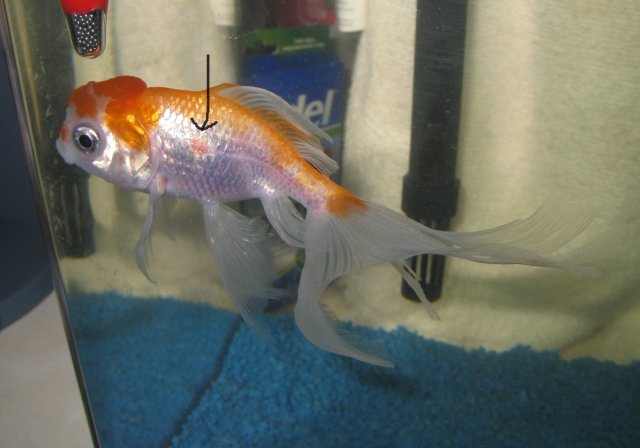 4 yr goldfish red spot
QuestionMy Goldfish
QUESTION: My goldfish sudden
4 yr goldfish red spot
QuestionMy Goldfish
QUESTION: My goldfish sudden